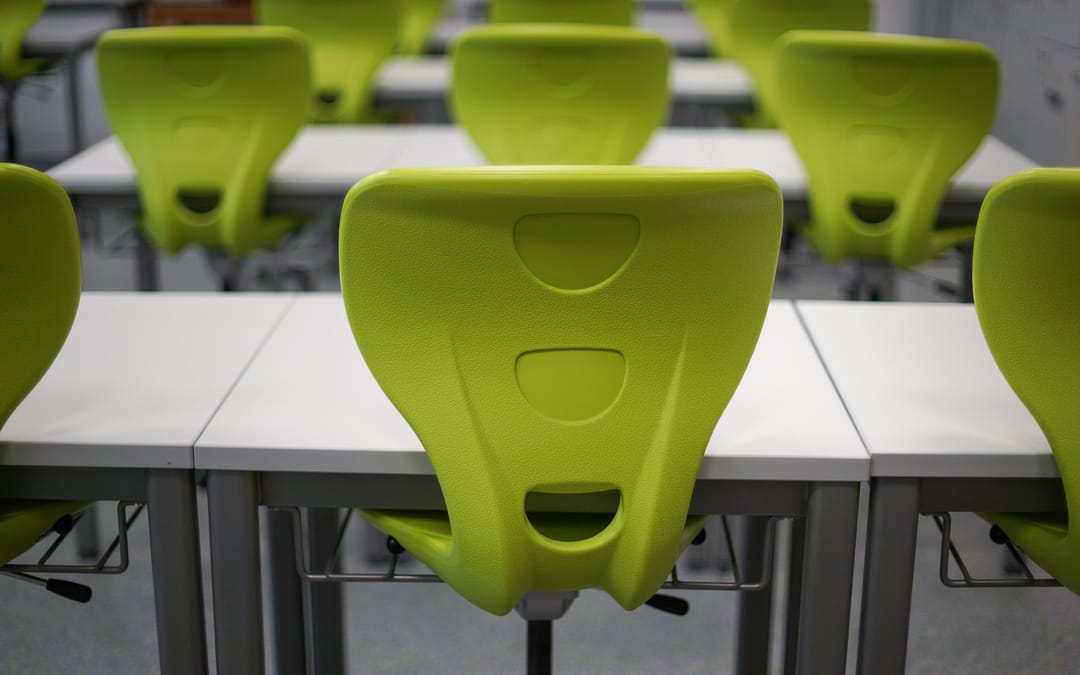When you think back on learning to walk or ride a bike, these lessons weren’t best understood through discussion—rather trial and error. This is top of mind as architectural professionals assemble plans for state-of-the-art educational facilities. Is there more of a value in hands-on active learning environments, or lecture compatible settings? The material being taught, of course, plays a large role – however several sources I came across explored the needs of top-performing classroom environments. Early childhood care and adult-learning environments had some interesting parallels in design affecting the effectiveness of learning. As a result, many find that the concept of an operational classroom design is a function of anticipating the need of its inhabitants.
Studies have shown that STEM-focused coursework (Science, Technology, Engineering, and Mathematics) is best delivered through active-learning. Given this, instructors focused on productivity and efficiency in their teaching tools have been working together to explore more engaging technologies that can be integrated into a building to improve student performance and information retainage.
I like the idea of “thinking beyond the four walls students are used to” and have seen this executed in opportunities where Old Forge has had clients seek our feedback in design. Contrary to the grid of desks and chairs that most have experienced in school, flexible furniture is making active learning and out-of-the-box thinking more attainable.
Trust The Process
The United States GSV (General Services Administration) offers some recommendations in this arena—advising that “owner involvement at the beginning of the design process, starting at the initial planning stages, is the most valuable investment to ensure the excellence and cost effectiveness of the final result.” Beginning with a high level of communication between design professionals, occupants of the space, property managers, and safety professionals minimizes the need for changes, disruptions, and/or surprises along the way. This is a collaboration we welcome in any type of project.
Both indoor and outdoor spaces are showing benefits to keeping learning interesting and stimulating. Many school administrations are exploring environments that combine the two as much as possible. From enhancing technology, interactive smart boards, touch-screen computers, and wall writing surfaces, students are able to experience a bit more dimension to their learning. This is something that is not only helping teachers relay information more productively, but more built-to-suit options allow students to learn more fully.
Design Features to Avoid
The following is a short list of center features that have been found to be impractical or not conducive to the desired environment in an early education setting:
- Excessive areas of fixed carpet.
- Sinks that are not deep enough or movable faucets that allow water to flow onto the adjacent counter instead of into the sink.
- Shelving which is too high to reach.
- Cubbies that are lined up facing into the classroom: this condition wastes classroom wall space and creates a chaotic visual impression.
- Solid interior doors that do not allow for supervision.
- Inadequate or improper storage, creating crowded, chaotic-looking classroom environment. Note that large central storage rooms will not solve the center’s storage problems alone.
In more mature educational settings, universities have found that students engaged in lecture-type format learning scored less in testing than more hands-on, experiential learning spaces.
Implementing dynamic active learning is best facilitated by fusing technology with classroom elements such as furnishings, lighting, and writing surfaces. Today’s undergraduate students — and, increasingly, graduate students — are learners whose education has involved use of computers and networked devices. Laptops, tablets, and smart phones are commonplace tools for contemporary students. These tools are also a part of faculty life; thus, teaching practices and learning spaces (including virtual learning spaces) should not only accommodate current technologies but also be adaptable for those just over the horizon.
Through creating spaces conducive to affinity grouping and various methods of learning, education environments become more personalized and need/skillset-driven. One additional note that isn’t always common knowledge is that highly effective learning settings do not have to be high-technology driven. If designed properly with function in mind, there is plenty of opportunity for engagement for both child and advanced learners.
It’s no secret that the built environment plays a pretty major role in a building’s function, but realizing that it can improve learning is a finding that is worth remembering in planning new facilities and improving existing structures. In addition to the learning features of a classroom, factors such as lighting, acoustics, temperature, and air quality all can play a striking role in improving the learning process.
Sources referenced:
https://www.bdcnetwork.com/blog/why-school-architects-must-understand-how-students-learn
dezeen.com/2013/01/02/poor-school-design-can-affect-learning-says-new-study/
https://www.gsa.gov/cdnstatic/designguidesmall.pdf
https://er.educause.edu/articles/2014/10/the-evolving-classroom-creating-experiential-learning-spaces

